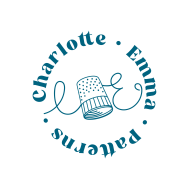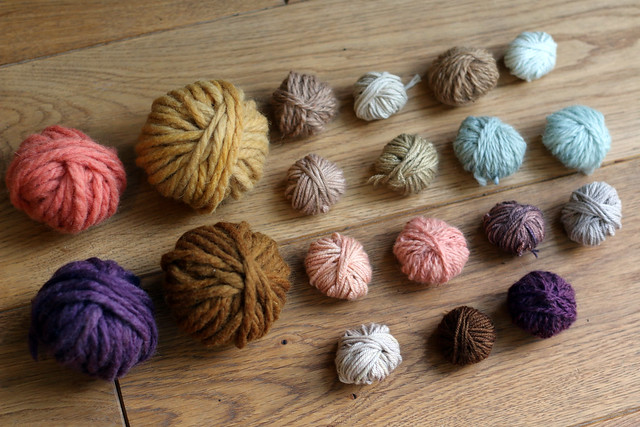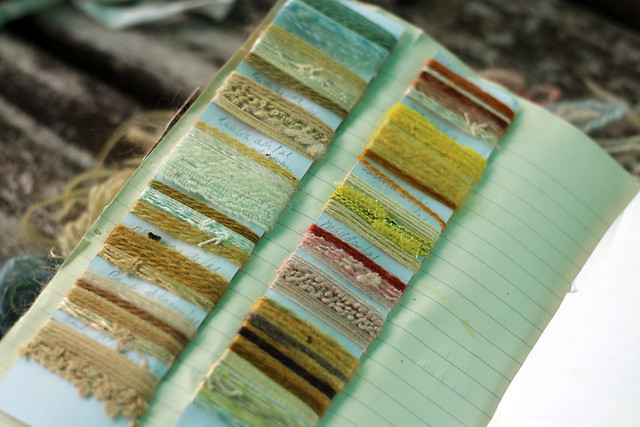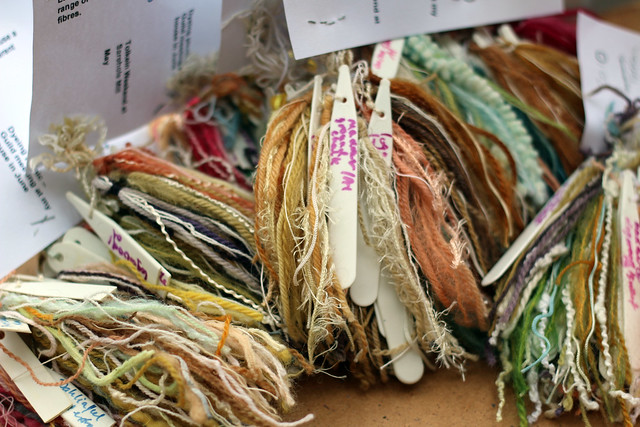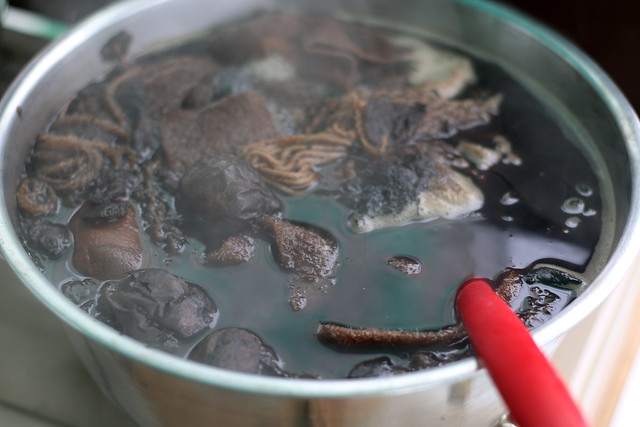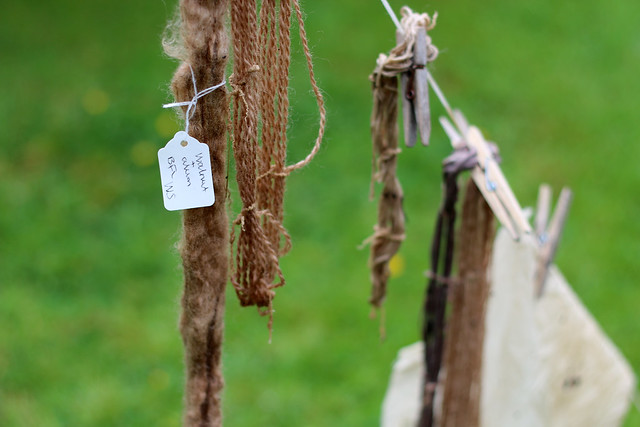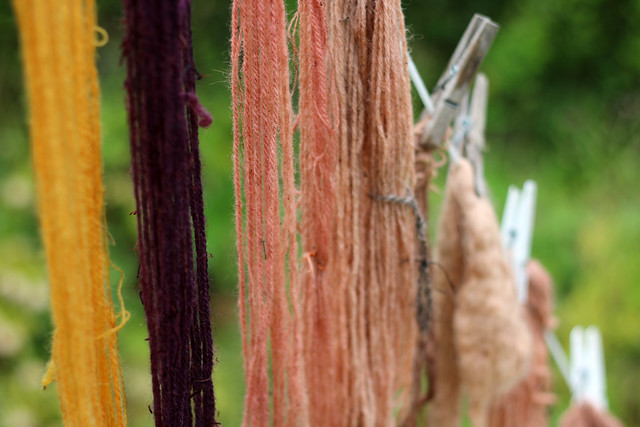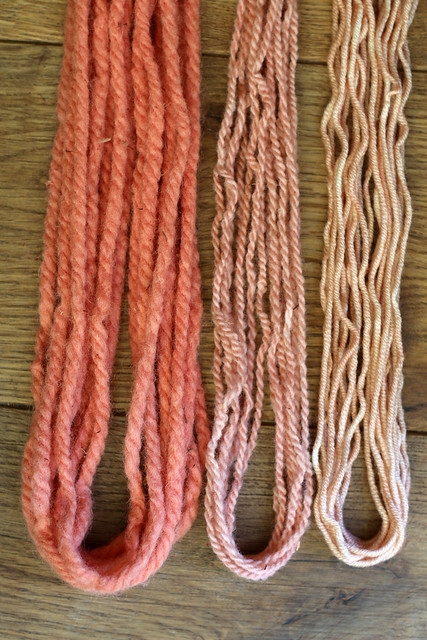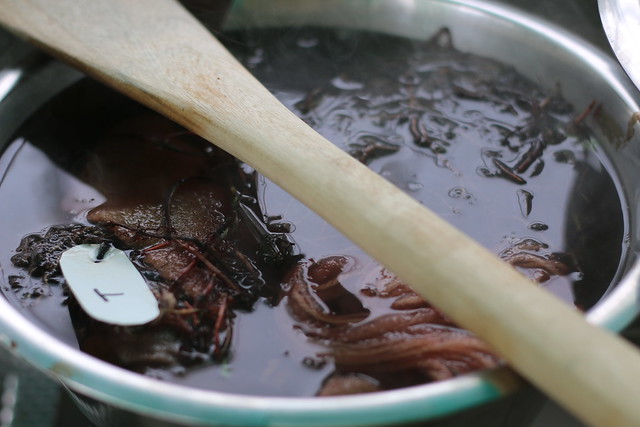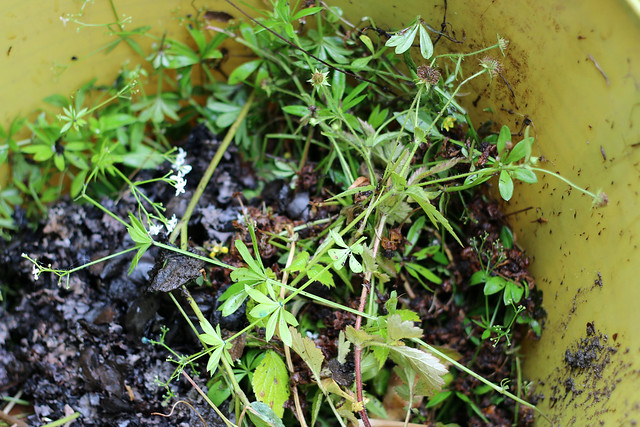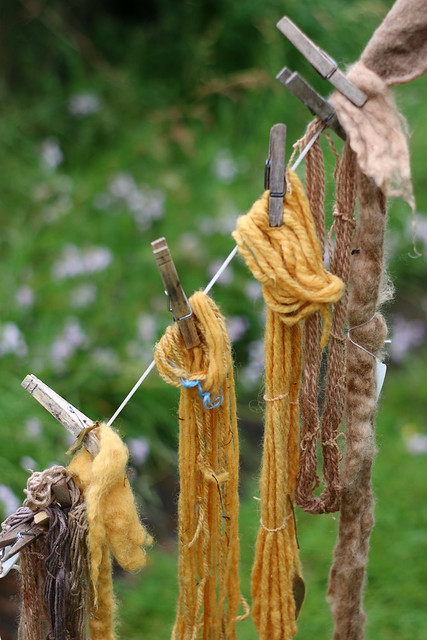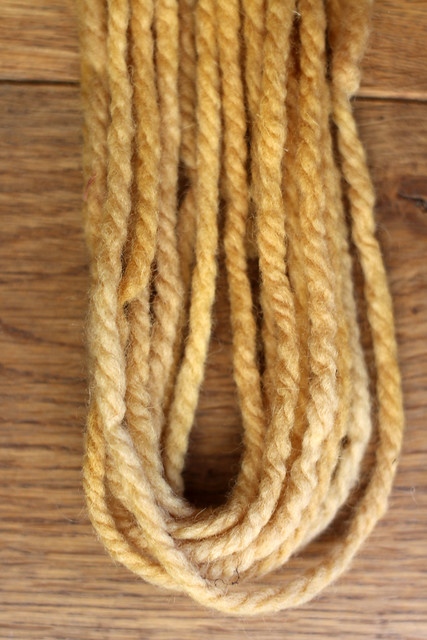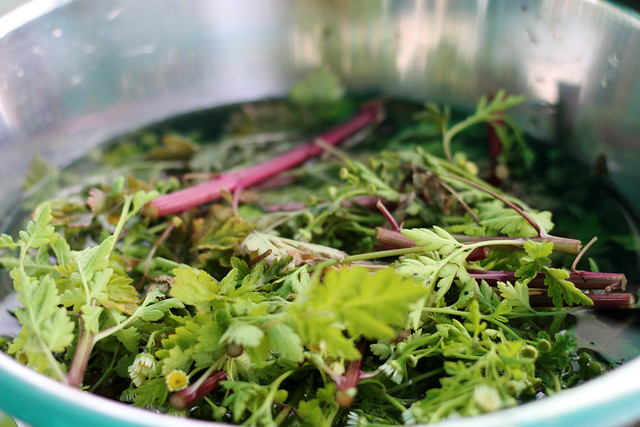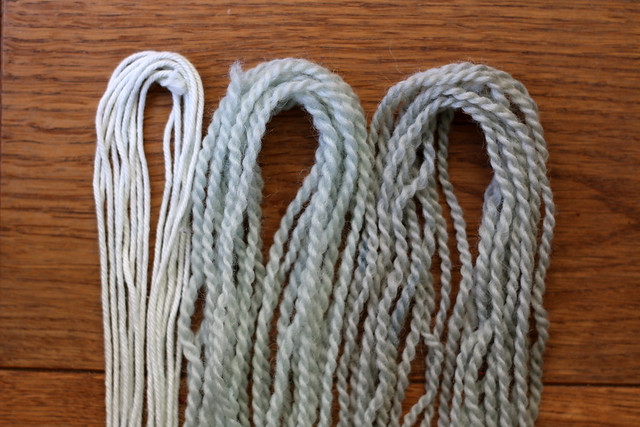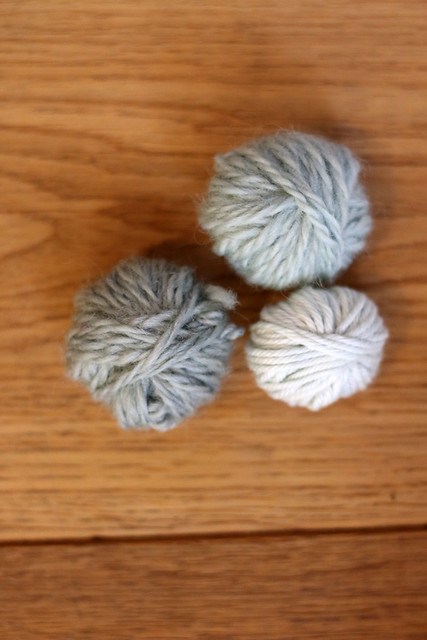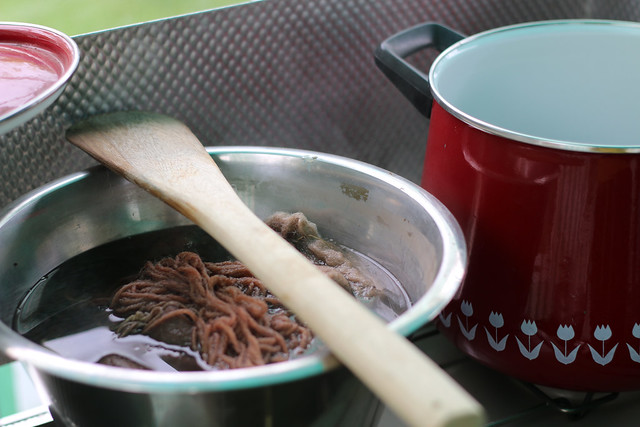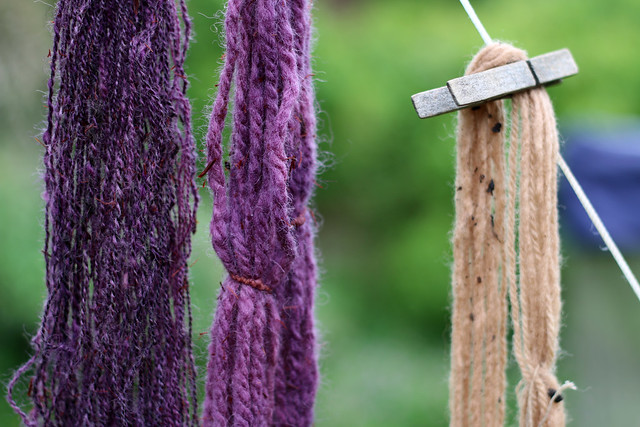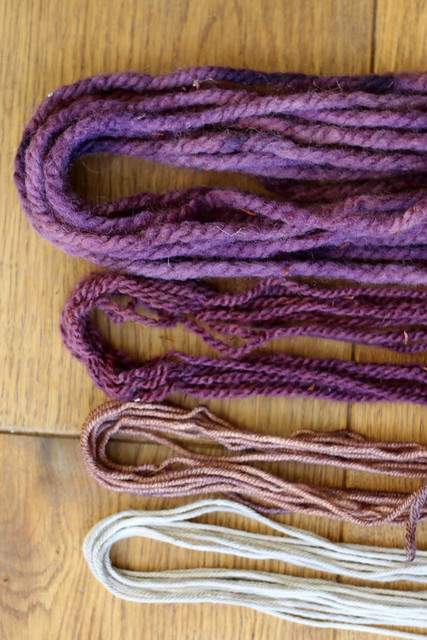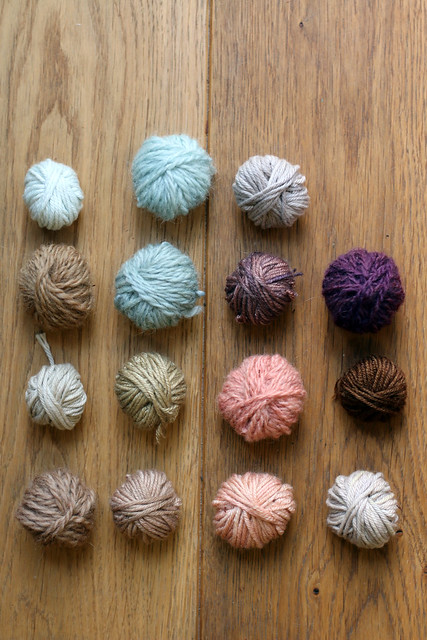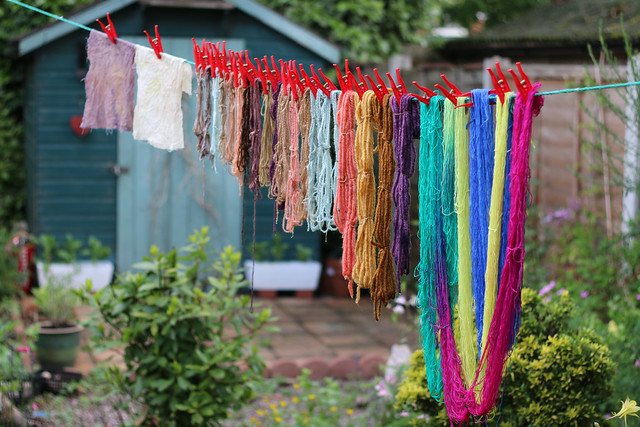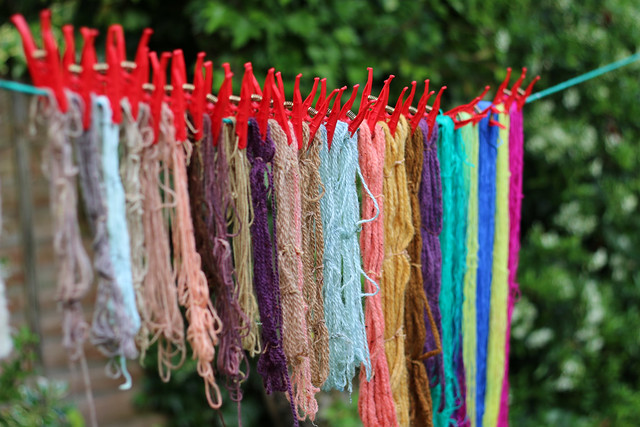Last month, I became a member of my local guild of the Association of Weavers, Spinners and Dyers. The guild meet once a month, with the June meeting dedicated to a dyeing day at the home of Sarah, one of the guild members.
During the day we dyed yarn and fleece with both natural and acid dyes. This post contains the results of dyeing with nine different natural dyes, I’ll post separately about acid dyeing.
All of the protein (animal-based) fibres I took to the dyeing day were pre-mordanted a few days in advance, with alum and cream of tartar (I’ll post the recipe on the blog soon). I also took along some skeins of cotton yarn and British aran wool (not mordanted in advance) to use with the substantive dyes. Unfortunately, all of the cotton yarn I dyed faded substantially once washed. Given that the dyes were substantive (e.g. indigo) I was surprised at the extent the colour did fade, so wonder if it was to do with how the yarn had been treated during production? I did dye a couple of squares of unbleached cotton fabric (also not mordanted in advance) and they retained their colour much more successfully, which suggests it is related to the treatment of the yarn.
The exact yarns I used were (from left to right below):
♥ 100% cotton (Rowan handknit cotton) (unmordanted)
♥ 75% merino / 20% silk / 5% cashmere DK (Sublime)
♥ 100% wool DK (TOFT Alpaca, in Oatmeal)
♥ 100% merino wool chunky (Rowan Big Wool)
♥ 100% wool aran (Jarol) (unmordanted) not pictured
I got especially excellent results with the chunky merino wool, so would definitely recommend that for future dye projects.
In addition to lots of dyeing, everyone that attended the dyeing day brought along something for a shared buffet lunch, so there was endless food, tea and coffee to sustain us.
The dyeing itself took place in Sarah’s garden on three separate camping stoves, and in an assortment of metal bowls which included pet bowls.
There were also some nice things to buy. I came home with a large pile of vintage knitting patterns and magazines, plus a small skien of yarn (below) hand dyed by Sarah Cage, whose home we were at for the dyeing day.
The nine natural dyes we tried are listed below, with photos of the colours I obtained.
Dyer’s Coreopsis
Coreopsis typically produces a yellow dye, but we achieved a lovely yellow-brown.
With my yarns, the colour leaned towards yellow in the case of my chunky merino, and a dark brown with my merino, silk, and cashmere blend.
Walnut
Walnut is a substantive dye and produced a pale brown on my yarns. My aran wool (unmordanted) held it’s colour, but the cotton yarn faded once washed. I added a square of unbleached cotton fabric late, just before the pot was removed from the heat, so it didn’t get chance to take on much dye.
Brazilwood
We achieved a lovely range of pinks using Brazilwood, and paler pinks with Woodruff.
Woodruff
Woodruff (the roots are the section used for dye) was one of the plants we used for dyeing which was grown in Sarah’s garden, where the dyeing day was held. The plant was growing right alongside where we were stood.
Privet
I was really impressed with the bright yellows we achieved with privet. The privet we used has just been trimmed off a hedge in Sarah’s garden, so we put the offcuts to good use.
Feverfew
We achieved a paler yellow with fresh feverfew.
Indigo
We achieved a pale blue using indigo extract, due to the volume of extract used and/or number of projects in the pot. My aran yarn (unmordanted) held it’s colour, unlike the cotton. The two aran yarns pictured below achieved slightly different shades of blue, as one spent slightly longer in the dye pot at a higher temperature.
Lichen
Lichen produced a pale brown with my aran yarn (unmordanted), although the colour faded with my cotton yarn. There are ethical issues around using lichen for dyeing as they grow very slowly and may be protected species, so shouldn’t be foraged. However, the dryed lichen we were using had been in the possession of members of the guild for many years, and passed on to Sarah.
Logwood
Perhaps my very favourite result was achieved with Logwood, which produced a range of purples with my wools and cotton. I was given the remaining logwood to bring home, so need to decide what I want to dye with it.
After getting home from the dyeing day, and before photographing my yarns, I left them overnight to fully dry. The next morning I rinsed each yarn in cool water to remove any excess dye, and then washed them in warm water and wool soak.
The dyeing day was a great opportunity to try a range of natural dyes, in good company. If you’re interested in natural dyeing, spinning and/or weaving I’d recommend the association as a good way to learn from others and at very little cost (after the membership fee, it’s £2 each session to cover unlimited tea and cake). There are guilds across the UK, and I’m sure there are similar organisations worldwide.
My collection of small dyed yarn oddments is growing – I’m thinking a weaving, but it’s still in the plotting stage at the moment.
The photos below show the yarns drying in my garden after being washed, along with my acid dyed yarn which I’ll post about soon.
